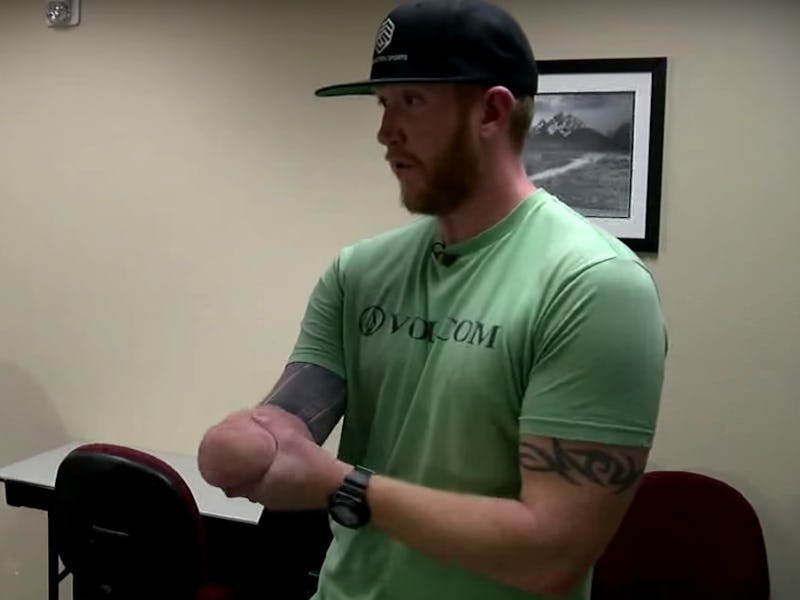This Veteran Got a Prosthetic Arm That's Controlled by His Mind
Three years after losing his forearm, he can use it again.

Staff Sgt. James Sides is a Marine veteran who lost most of his right forearm in an explosion in Afghanistan on July 15, 2012. As he tells it, Sides had to deactivate an improvised explosive device, but it was booby-trapped, leading to its detonation. Now, three years later, Sides can use his right arm again thanks to a prosthetic from the Alfred Mann Foundation that he can control with his mind. He’s the first person in the world to use the Mann Foundation’s “Implantable MyoElectric Sensor” technology.
Sides had surgery to have electromyographic sensors embedded into his skin; he has eight of them. Those EMG sensors are “over the muscles on the residual portion of the limb where they record the muscle activity.” They essentially act as nerves that send signals to his prosthetic hand for motion. The prosthetic arm is then physically attached at the EMG sensor sites.
As he says, “The prosthetics over my residual limb, that copper coil creates an electromagnetic field and when my muscles fire the sensors pick that up.”
Staff Sgt. James Sides's prosthetic hand is nearly fully dextrous.
The IMES technology gives Sides a greater range of motion than other prosthetics because the EMG sensors are placed at very specific sites on the limb. Nobody actively thinks, “I need to move my pinky,” for instance. The brain knows which signals to send and the hand receives them. With the Mann Foundation’s prosthetic, Sides is able to control his right hand in nearly the same exact manner as his left one.
Staff Sgt. James Sides opens a water bottle using his prosthetic arm.
The hand is not a “Luke Skywalker hand,” as Sides says, but it’s close.
Luke Skywalker's new hand in 'Star Wars'
There are certain movement aspects that it cannot replicate. For example, he has to almost flick off the water bottle straw because the thumb is not quite pliable or textured enough to grasp it. But he is still able to complete the action, almost completely naturally.
A diagram of the Alfred Mann Foundation's prosthetic arm.
Sides says he now has three ranges of motion with the new prosthetic over typical ones: “I can open and close, I can rotate my wrist and now I can move my thumb independently. On the plus side I can do everything all at once now.”
The new prosthetic arm is groundbreaking technology that’s quite necessary, as an estimated 1.7 million people in the United States have undergone amputation. Sides is the first of seven patients to receive the arm. It won’t be a minute too soon when more can give it a try.